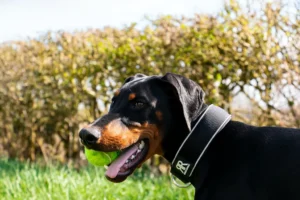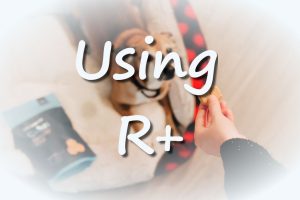Special-needs animals can make excellent pets, just like their non-special-needs counterparts. For a dog, losing an eye is a minor impediment.
Dogs are highly adaptable creatures. Despite the loss of one eye, they’ll adjust their behavior and quickly learn to navigate their surroundings effectively.
Just like a two-eyed dog, a one-eyed dog will welcome you at the door, cuddle next to you on the couch, and go for a walk with you.
Owning a one-eyed dog is similar to owning a fully-sighted dog. However, there are a few things to keep in mind when adopting a dog with one eye.
Haven’t chosen a name for your dog yet? Get inspired in our guide: one-eyed dog names.

1. What to expect when adopting a one-eyed dog
Removing one eye in a dog is a simple surgery that usually goes well. Except for reduced depth perception, the dog will be just like any other, but there are a few differences.
If you’re adopting a one-eyed dog, expect it to be neglected by siblings because it is different. This means that when you bring it home, it will receive much more love than it is used to, and you will have a happy, energetic puppy. It will seek a great deal of your approval, which can be overwhelming.
In fact, many dog owners notice that one-eyed dogs often develop a heightened sense of loyalty, perhaps because of the increased attention and care they receive.
Because of this, you may want to start with training as soon as possible. If you want a well-behaved dog, you must begin early. To ensure your one-eyed dog gets properly trained, locate a trainer who specializes in training dogs with vision issues.
In any case, just be careful how you approach the dog because it may startle and scare him if you come from the side.
2. Approaching the dog and preparing the environment
To avoid startling a one-eyed dog, talk to them when approaching from their blind side. Mention this to visitors, and exercise extra caution around other animals and small children.
Next, preparing the environment before the dog arrives would be best. Remove the objects at the height of your dog’s head that could injure them, especially if they’re on the blind-eye side.
Examine your surroundings to see any dangers for a blind dog. Consider removing any furniture with sharp edges. Padding can also be applied to the corners of sharp objects such as tables.
Additionally, using contrasting colors in dog toys and bowls can aid your one-eyed dog in distinguishing them more easily from the background, making playtime and feeding smoother.
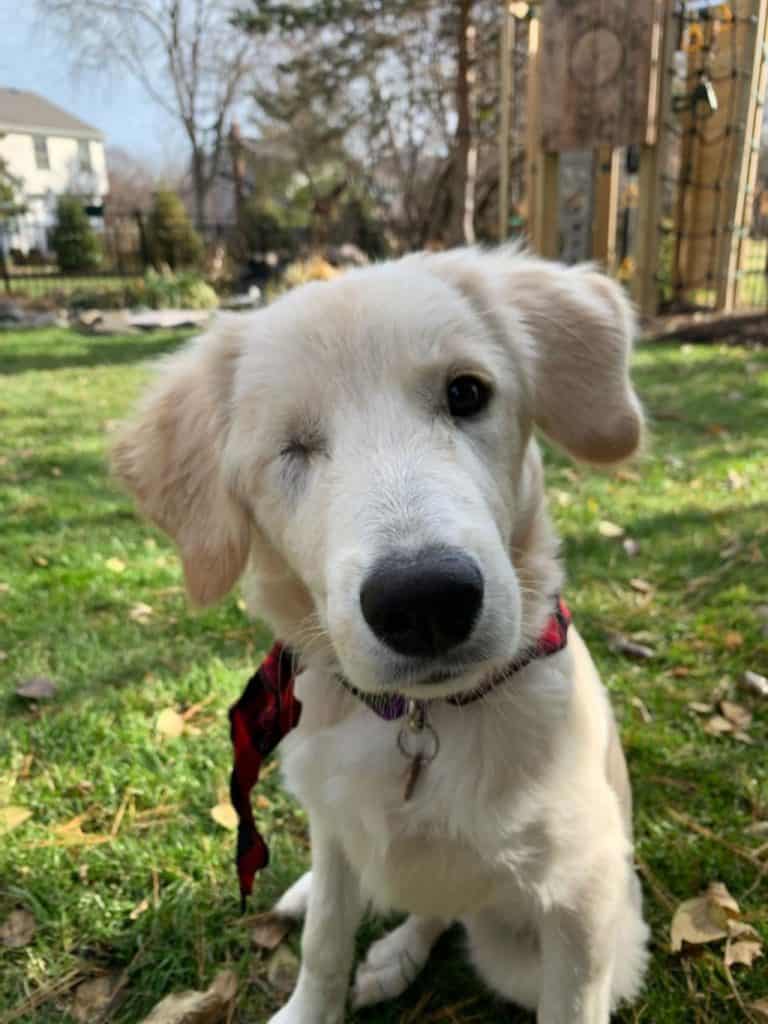
Other than that, the dog should be fine. My friend had a one-eyed dog that was fantastic. It didn’t disturb her or slow her down in the least. He took precautions such as not moving furniture or putting stuff on the floor, but the lack of an eye did not affect the dog’s behavior or ability to travel.
3. Rely on their other senses
To help your blind dog understand you, make your words more frequent and emphatic. Since one of your dog’s senses is weaker now, they will rely on others more, such as smells and sounds. Using these will help your dog navigate their environment better.
If your pet enjoys exploring outside, try hanging a wind chime near the door to help guide them back to where they need to be when they want to come in.
Consider carrying a little bell or a rattle when taking your dog for a stroll. This ‘jingle’ will always inform your dog of your whereabouts. If your pet wants to know where you are, try this throughout the house.
Your dog’s sense of smell can be beneficial in identifying dangerous areas. You can ‘tag’ specific areas of the house to let them know what’s up. For example, small amounts of lemon oil could identify obstacles, such as stairwell landings, which your dog will easily recognize.
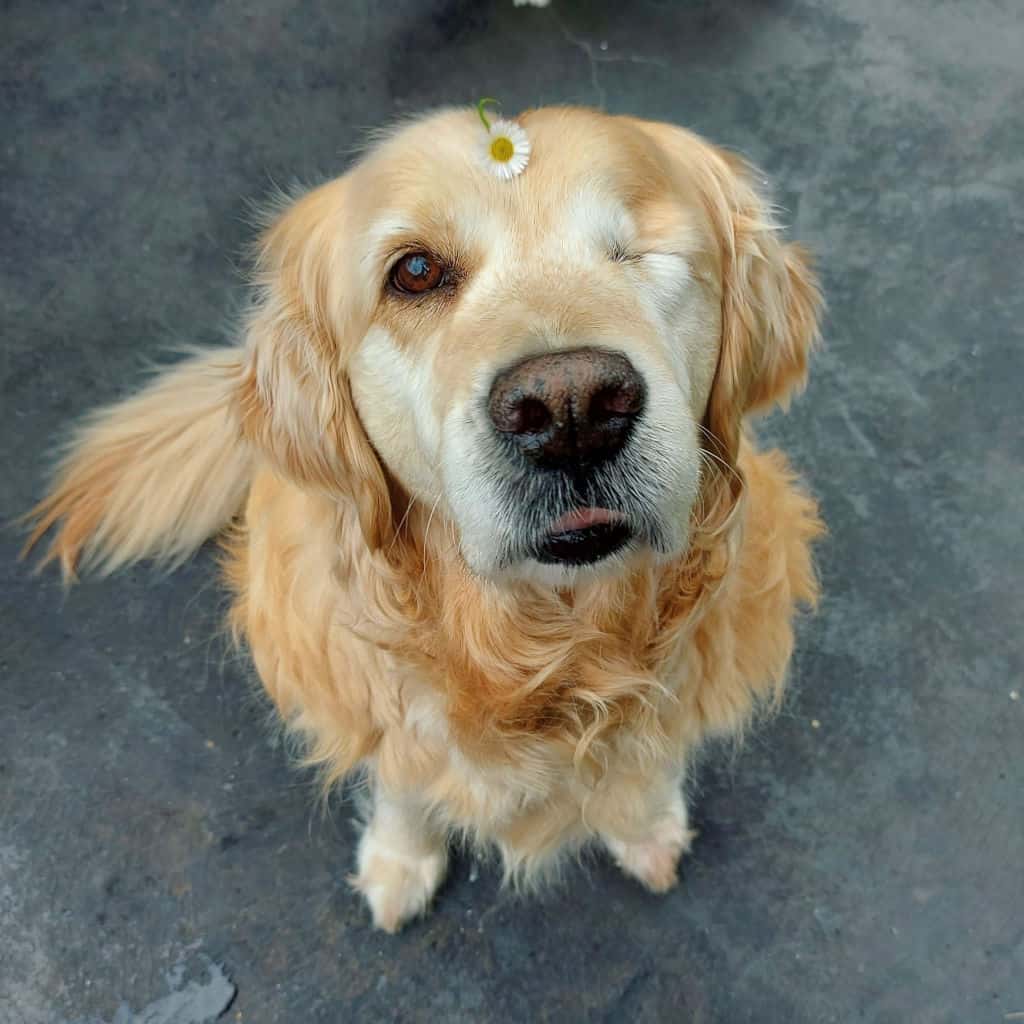
4. Things to know when going out
Outside the house, look for low-hanging branches, thorns, and uneven surfaces that could hurt your pet. If your pet spends time outside, keep your yard/garden free of any dangers.
During walks, we advise to keep your dog on a leash. Let them off the leash if you’re in a safe, enclosed area. Consider scanning the room for any dangers ahead of time to protect your dog’s safety.
Pavements can be tricky, especially with shadows and puddles. Your one-eyed dog might misjudge these occasionally, so guiding them gently with the leash in such areas can be helpful.
People and other dogs should approach your blind dog from the side of the healthy eye. If the dog is out socializing, inform others that your dog cannot see in one eye so that they do not reach out from the blind side and cause the dog to leap unexpectedly.
Be careful when walking your dog in busy areas and around cars because things on their blind side might not catch their attention.
So, if you’re walking your one-eyed dog, try to walk on the left side of the road so that people and other dogs can pass by on the right. She will always notice them and will not be scared or snap at others.
5. Stay calm, and your dog will be fine
Try to be calm around the dog at home so that it understands that it must maintain a low profile indoors. Also, ensure it has a bed where it won’t be bothered so the dog has a safe place to rest.
Regardless of your dog’s excitement, try not to yell at them. Ignoring bad behavior and avoiding making the dog nervous is preferable. An anxious dog becomes aggressive, and aggressive dogs are frightening.
Building a routine can be incredibly beneficial. Dogs, especially those with visual impairments, thrive on predictability. Regular feeding times, walks, and play sessions can provide a sense of security for your one-eyed companion.
The bottom line is that the dog will be like any other if you allow them to do so. However, properly caring for a one-eyed dog enables them to adapt appropriately and rely on their other senses to enjoy a happy life.
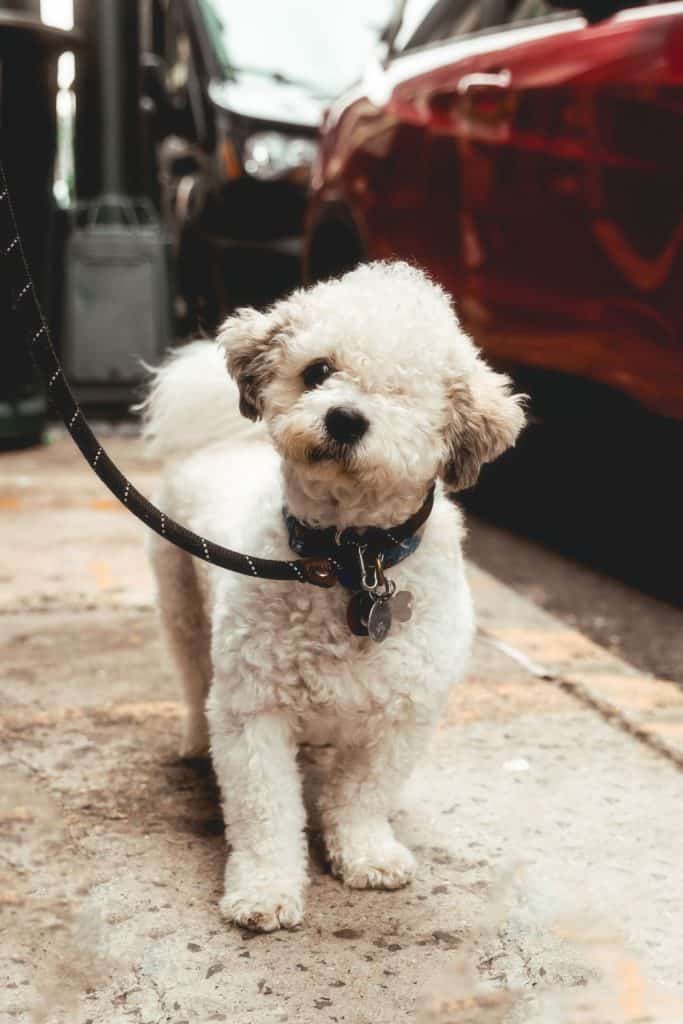
FAQs
Can dogs adapt to life with one eye?
Dogs can readily adjust to life with one eye and enjoy long, happy, and problem-free lives. However, you can do a lot to make their lives easier and ensure they don’t hurt themselves or snap at other dogs or people when approaching them by the side the dog’s blind eye.
Do one-eyed dogs and cats get adopted?
One-eyed dogs and cats are quickly adopted and do well in everyday life. If he’s a good dog, the lost eye won’t bother them in the least. They may have difficulty catching balls and may be surprised if you go up on their blindside, but other than that, they’re just like any other pet.
Does blindness affect pets’ lives a lot?
Even though cats and dogs would prefer to see with both eyes, going blind doesn’t affect their quality of life if the owner takes care of them properly. Fortunately, pets rely on their other senses more than their vision. Blind dogs get around extremely well by depending on their other, stronger senses, such as smell.
Alex, a passionate animal lover, has experience in training and understanding animal behavior. As a proud pet parent to two dogs and three cats, he founded AnimalReport.net to share insights from animal experts and expand his knowledge of the animal kingdom.




